Key takeaways:
- Craft fairs serve as vibrant community spaces for artisans to connect with customers and showcase their creativity, enhancing both sales and relationships.
- Preparation is crucial, including stock management, booth organization, and understanding customer inquiries to improve engagement and sales.
- Effective marketing strategies such as utilizing social media, creating visually appealing materials, and networking with fellow artisans can significantly boost visibility and reach.
- Pricing should reflect the perceived value of crafts, considering costs and competitor pricing while conveying the story behind the work.
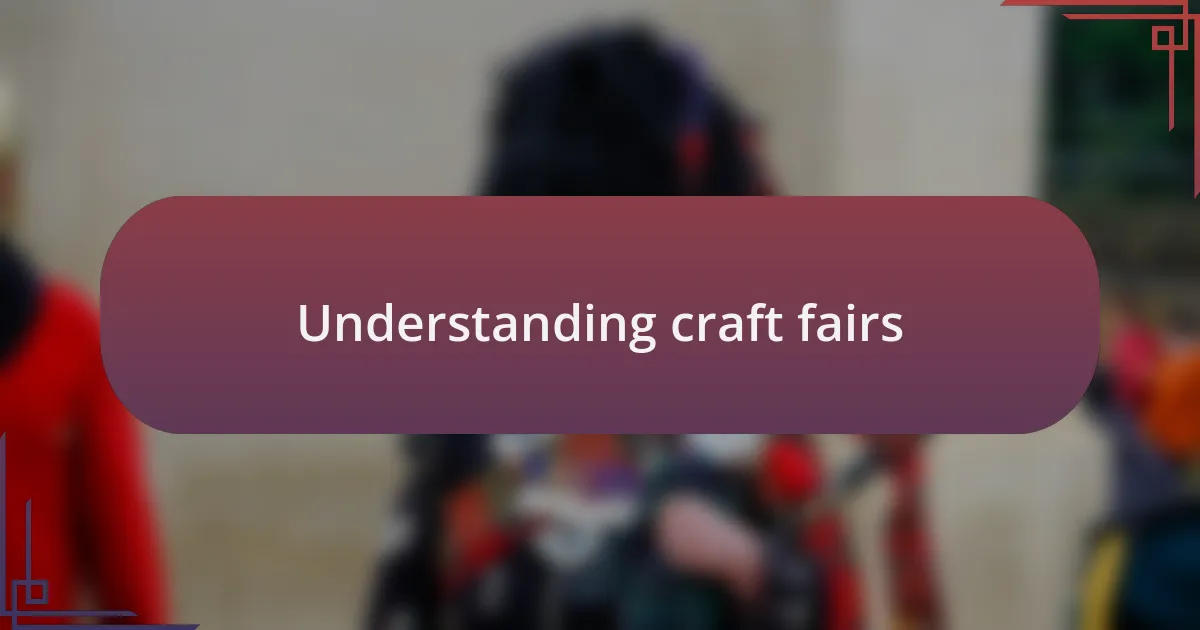
Understanding craft fairs
Craft fairs are vibrant spaces where creativity comes to life, allowing artisans to showcase their unique creations directly to the public. I remember my first craft fair experience; it felt exhilarating to see how people responded to my work. The energy was infectious, with each booth reflecting the personality and passion of its maker.
As I walked through the aisles, I couldn’t help but wonder what drives people to create such diverse pieces. From handcrafted jewelry to intricate pottery, each item tells a story. I found that engaging with customers not only boosts sales but also fosters connections that remind us why we love what we do in the first place.
These events are more than just marketplaces; they’re micro-communities where artisans and buyers exchange ideas and inspiration. The laughter, the excitement of discovering something new, and even the occasional debate over pricing can create memorable interactions that extend beyond a mere transaction. What will you discover at your next craft fair? Each visit has the potential to reshape your understanding of art and creativity.
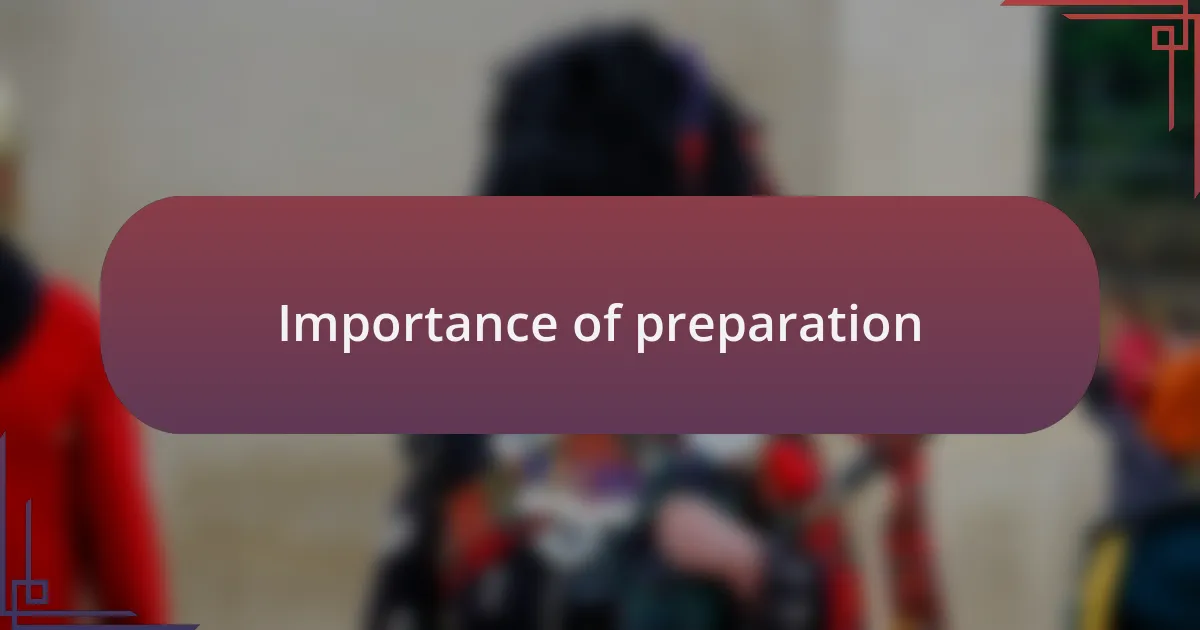
Importance of preparation
Craft fairs require careful planning, and I’ve come to appreciate the importance of preparation in this vibrant atmosphere. I still recall the chaos of my first fair when I underestimated how much stock I would need. The thrill of being surrounded by other artisans quickly turned into panic as I watched my inventory dwindle while eager customers lined up. It was a stark reminder that being ready can make or break your craft fair experience.
Thinking ahead about your setup is equally vital. I’ve learned that a well-organized booth not only attracts attention but enhances the shopping experience for customers. I remember spending a few hours setting up a welcoming display with clear signage. It paid off as shoppers lingered longer, curious about my process and eager to ask in-depth questions. How much easier is it to connect with customers when your booth feels inviting?
Preparation also extends to engaging with your audience. I began keeping a log of common questions and customer feedback from past events. This practice helped me refine my approach and communicate better, which, in turn, built stronger relationships. Have you ever considered how understanding exactly what your customers are curious about can improve not just your sales, but their overall experience? Taking the time to prepare in this way has significantly transformed my approach to craft fairs.

Effective marketing strategies
Effective marketing strategies at craft fairs revolve around understanding your audience and tailoring your approach. I vividly remember the first time I used social media to promote my booth. Instead of just putting up a post, I crafted a short video that showcased my process and highlighted the passion behind my work. The response was incredible! People felt connected to my craft before they even stepped into the fair, making them more likely to stop by and chat. How powerful is it to build anticipation for your presence?
Another strategy I’ve found effective is creating visually compelling materials. I decided to invest in attractive flyers and business cards that reflected my brand’s aesthetic. The difference was apparent; people would grab my cards and ask questions just because they were drawn to the design. This not only boosted my visibility but also reinforced my brand identity. Have you thought about how your visuals can create a lasting impression at a craft fair?
Lastly, forming partnerships with fellow artisans has been one of my greatest marketing discoveries. I once teamed up with a local painter, and we did a cross-promotion where we shared booth space and advertised each other’s work. This collaboration expanded our reach and introduced both of our followings to new art forms. The sense of community and shared passion truly enriched the experience for everyone involved. Isn’t it amazing how networking can lead to unexpected opportunities?
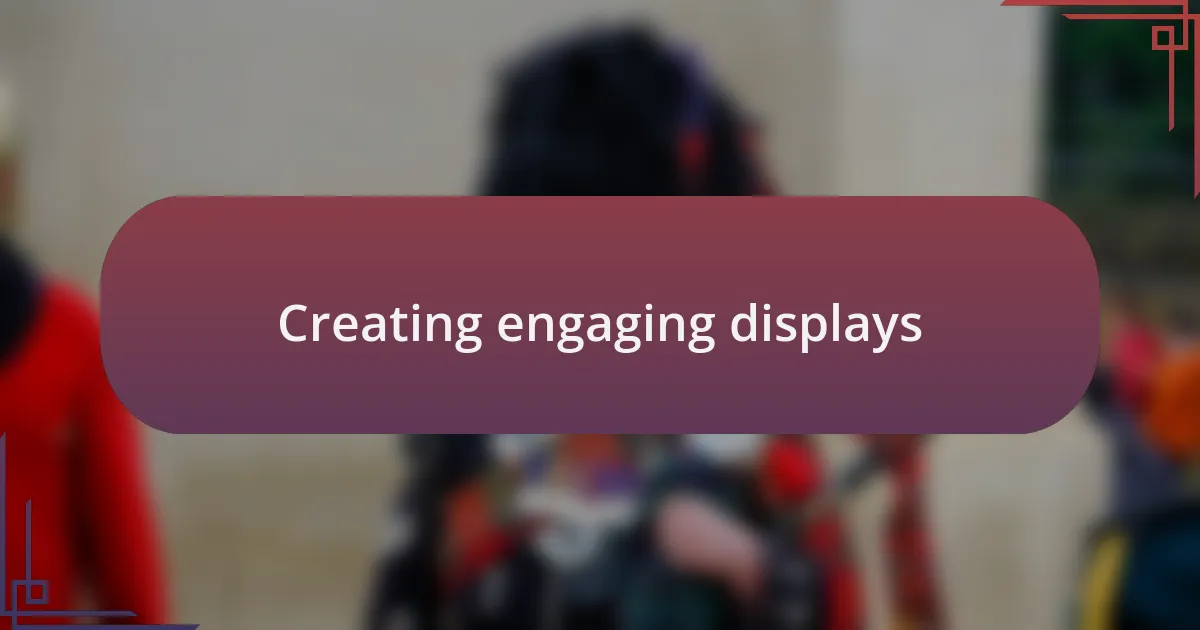
Creating engaging displays
Creating engaging displays is crucial for attracting attention at craft fairs. I recall a time when I decided to elevate my booth by incorporating a theme that reflected the changing seasons. By using natural elements like pine cones and autumn leaves, my display not only looked inviting but also resonated with visitors, drawing them in as if they were stepping into a cozy cabin. What narrative is your display telling?
Colors play a significant role in how people perceive art, and I learned that firsthand when I switched to a bright, bold palette for my backdrop. The energy it created was palpable; I noticed a marked increase in foot traffic that day. It’s fascinating how such a simple change can ignite interest and spark conversation. Are you using colors effectively to communicate your brand’s essence?
I also find that incorporating interactive elements can transform a static display into an engaging experience. During one fair, I set up a small demo area where I demonstrated my craft in real-time. People loved watching the process unfold, leading to spontaneous conversations and increased sales. In what ways can you invite your audience to interact with your work?
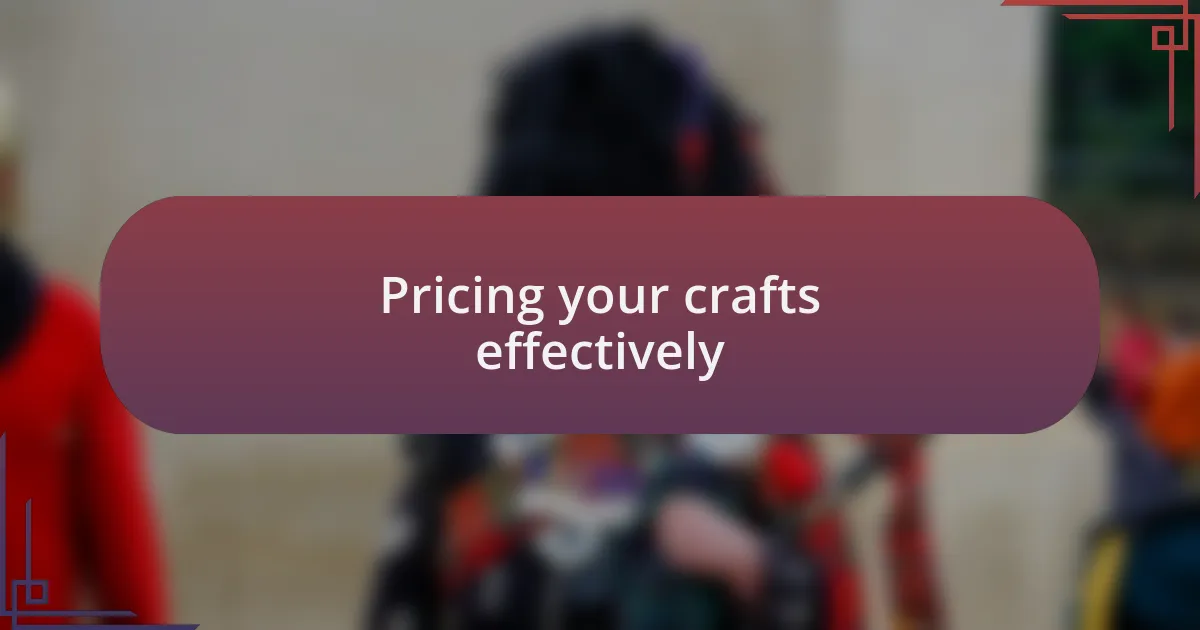
Pricing your crafts effectively
Setting the right price for your crafts isn’t just about covering costs; it’s about conveying value. I remember when I first started, I priced my items too low, thinking I was being friendly. Instead, I found that customers perceived my work as less valuable. How do you want your audience to view your creations?
Understanding your costs, including materials and time, is essential. One craft fair, after carefully calculating my expenses, I set my prices higher than I initially thought was possible. The result? Not only did I make more sales, but I also felt more confident in the worth of my work. Are you truly valuing the time and effort you put into your crafts?
Lastly, don’t shy away from observing what similar artists charge. At one fair, I noticed a vendor with similar products priced significantly higher, which sparked my curiosity. I asked them about it, and they explained how their pricing reflected their experience and brand story. What story does your pricing tell about your work?

Personal experiences at craft fairs
When I think back to my first craft fair, I remember the whirlwind of emotions. Setting up my booth felt exhilarating but also nerve-wracking. As I watched people browse my creations, I felt a mixture of pride and vulnerability. Have you ever felt that rush of hope waiting for approval from others?
One memorable moment happened when a couple stopped by and fell in love with my handmade jewelry. Their excitement was palpable, and they shared stories of where they would wear the pieces. Witnessing their genuine joy not only made my day but reinforced my belief that craft fairs are more than just sales; they’re about creating connections. Have you ever found that your work resonates deeply with someone?
Another experience stands out—an unexpected conversation with a fellow vendor who had years of experience. We talked about the challenges we faced, sharing our victories and frustrations. I learned so much from their perspective, and I realized that these events are often about community support. Don’t you think it’s uplifting to share this journey with others who understand?
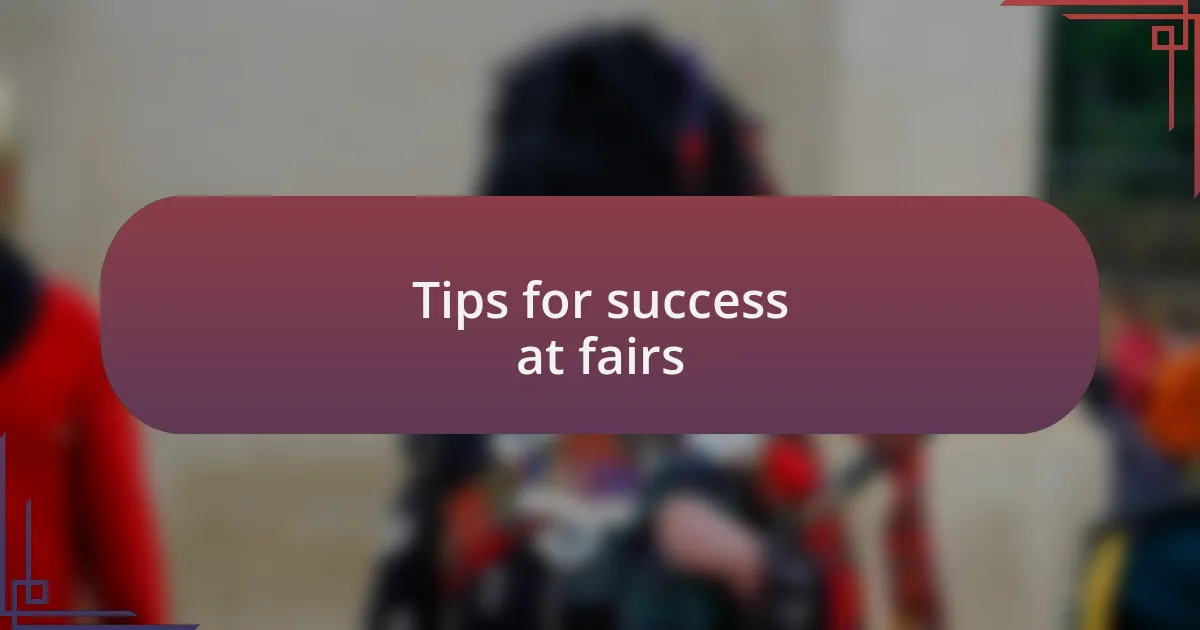
Tips for success at fairs
When it comes to standing out at craft fairs, I can’t emphasize the importance of presentation enough. I remember one fair where I took extra time to arrange my booth with eye-catching displays and clear signage. The result? I noticed more passersby stopping to look, which made me realize how much first impressions matter. Have you ever walked past a booth simply because it didn’t draw you in?
Engaging with customers is another key to success that I learned early on. During one event, I made a point to greet everyone who approached and share stories behind my pieces. This small interaction created a welcoming atmosphere, allowing for meaningful conversations. Do you ever notice how a simple smile can brighten someone’s day and open doors to deeper connections?
Lastly, always be prepared for the unexpected. I recall a situation where a sudden storm threatened to disrupt the fair. Instead of panicking, I quickly secured my setup and used the time to chat with other vendors, leading to some valuable collaborations. How do you handle moments of uncertainty in your creative journey? Embracing the unexpected can often lead to unforeseen opportunities.